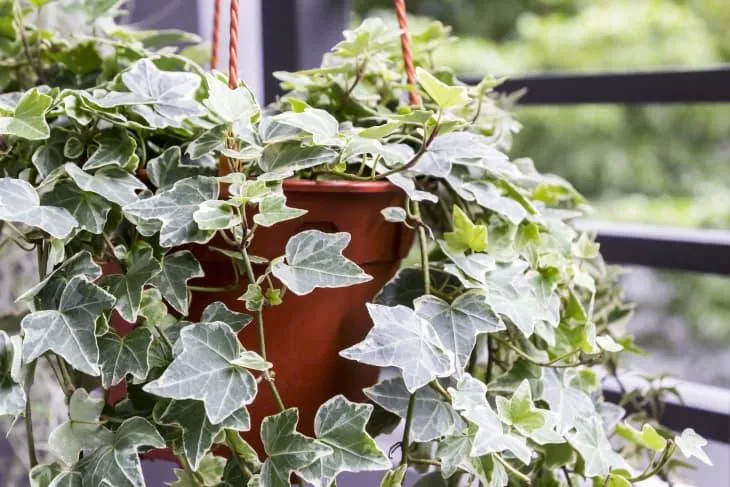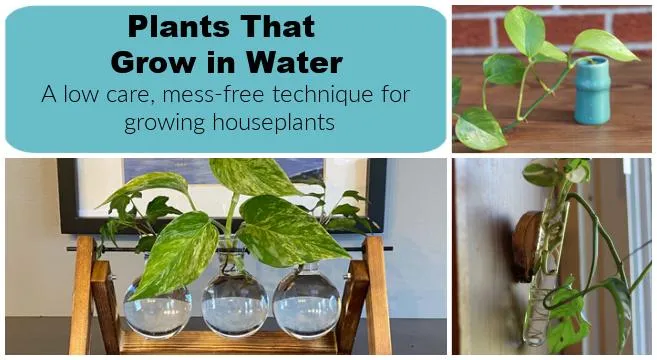All You Need to Know About Growing English Ivy in Water
If you’ve searched for “english ivy in water,” chances are you want to know whether or not you can propagate and grow english ivy (Hedera helix) in water. In this article, I’ll cover all the basics of growing this popular houseplant through water propagation and answer any other questions you may have.
Can English Ivy Really Be Grown in Water?
The short answer is yes – english ivy can absolutely be grown solely in water. Using a method called water propagation, you can root cuttings of ivy and establish new plants without soil. I’ve had success growing english ivy this way many times over the years. From my experience, as long as you follow a few simple steps, water propagation is a reliable technique for multiplying your ivy collection.
Collecting Cuttings for Water Propagation
To get started, you’ll need fresh, healthy cuttings from an existing ivy plant. Select soft new growth tips that are 3-6 inches long. Make a clean cut just below a leaf node using pruning shears. The leaf nodes are the places where leaves emerge from the stem. Node cuttings are most likely to root successfully. Collect 6-12 cuttings to increase your chances of success.
- Remove any leaves below the water line so the plant can focus energy on root growth instead of maintaining underwater foliage.
- Trim any damaged or diseased portions from the cuttings.
- Allow cut ends to callous over by leaving them out for a few hours.
Setting Up Your Water Propagation System
Now you’re ready to transfer the cuttings to water. A clear glass is ideal for monitoring root development. Place small pebbles or marbles in the bottom to keep the cuttings elevated above sediment. Change the water every 5-7 days to prevent bacterial growth.
Alternatively, you can use a propagation station with individual cells designed for water roots. These are convenient since you don’t have to transfer rooted cuttings to soil one by one later on. Place one cutting per cell with just the leaf node submerged.

Rooting Conditions and Care
English ivy cuttings will root best in warm temperatures between 70-80°F. Indirect sunlight is preferable to strong, direct light which could scorch new growth. Roots may start to form within 2-4 weeks. You’ll know it’s time to transplant when you see healthy white root growth 2-3 inches long.
Mist the cuttings lightly every few days to keep humidity high around emergent roots. Rotate the container occasionally to ensure even light exposure. Be patient – some cuttings may take 6-8 weeks to root depending on growing conditions. Don’t lose hope if a few cuttings do not make it. From my experience there’s usually an 80%+ success rate.
Transplanting to Soil
Once the cuttings have developed an ample root system, they’re ready for soil. Carefully remove each rooted cutting from its water home without disturbing fragile new roots. Pot up individually in small containers with a well-draining potting mix. Keep soil slightly moist as the plants adjust to their new terrestrial environment.
Here’s where having a propagation station really pays off—you can simply plant the entire tray into a larger container. The rooted cuttings are already spaced properly for a full, bushy plant. Maintain moderate moisture and partial shade for several weeks as the English ivy establishes in soil. Soon you’ll have a whole new ivy from a few stem cuttings!
Ongoing Care of Water-Propagated Ivy Plants
Maintain English ivy grown from water propagation just like soil-grown ivy. Water when the top inch of soil is dry. Provide bright, indirect light and protect from intense sun which causes browning. Propagate tip cuttings every few months to continue expanding your collection. Clip any leggy growth to encourage branching. Repot annually in spring with a pot just 1-2 inches larger.

From my experience, water propagation produces healthy, vigorous english ivy plants that are essentially identical to those grown directly in soil. With a little patience and the right conditions, it’s a dependable way to create multiple new ivy individuals at no cost. Does this help address any questions you may have about growing english ivy solely in water?
Other Plant Options for Water Propagation
While english ivy does very well in water, it’s not the only plant suitable for this propagation method. Here are some other great options to try:
- Pothos – Extremely reliable and fast rooting. Can grow wholly in water for years.
- Philodendron – Many varieties root quickly. Heartleaf and brasil philodendron top the list.
- Spider plant – Thrives in water and produces plantlets on long stems above surface.
- Peperomia – Many types root within weeks. Good for dish gardens too.
- ZZ plant – Durable and drought tolerant when mature. Thick cuttings root readily.
Give one or more of these plant friends a shot at propagating in water. With some sunshine on the sill and weekly water changes, you’ll enjoy watching new growth develop without soil. Go on, let your inner plant scientist experiment! What have you got to lose?
Parting Thoughts on Water Propagation
In summary, propagating english ivy and other houseplants solely in water is a pretty nifty trick. It lets you make multiple new plants from single cuttings. With the right setup and care, roots may form within a few short weeks. From there, transplanting to soil is a breeze. Overall, in my experience, water propagation is a thoughtfully simple way to expand your indoor jungle. I hope this information helps if you’re thinking of giving it a try yourself. Let me know if any other questions come up!
English Ivy Aquatic Propagation Guide

| Method | Time to Take Root | Success Rate | Notes |
|---|---|---|---|
| Single Node Cuttings | 3-4 weeks | 60-70% | Clip a section with 3-5 leaves. Change water every 7 days. |
| Rooted Stem Cuttings | 1-2 weeks | 80-90% | Clip a 6-8 inch section with roots. Pot in soil when roots fill jar. |
| Leaf Bud Cuttings | 6-8 weeks | 50-60% | Clip a leaf with section of stem. Keep moist and shaded. |
| Rooted Layering | 4-6 weeks | 70-80% | Bury stem in moist soil. Pot when roots form along stem. |
| Submerged Cuttings | 2-4 weeks | 70-80% | Place stem ends in water. Change weekly. Pot when rooted. |
FAQ
-
Can english ivy grow in water?
Yes, english ivy can live fully submerged in water for quite awhile. Their roots will grow long and wispy sorta like underwater plants. As long as it gets sunlight, it’ll basically keep on thriving in the water.
-
How long can ivy survive under water?
English ivy can stay underwater for a bunch of weeks usually. Maybe even a few months depending on factors like light and nutrients. But eventually After quite a stretch, it’ll begin to weaken without proper drainage. Too much time submerged and the roots may dissolve away to nothing! So check on em regularly if keeping ivy longterm in the drink.
-
What kind of pot is best for water ivy?
Any vessel can work actually as long as it holds water well without leaking. Folks have grown ivy in sinks, glass jars, you name it. Though a pot with good drainage holes assists water changes. Experts suggest terra cotta possibly as it breathes better than, say, plastic. Might your ivy thrive more in breathable terra cotta? Who knows!
-
How do you care for water ivy?
Similar to soil ivy, water ivy needs decent light to survive. Place the pot near a sunny window. Change the water regularly too, like once or twice a week, to keep it from getting stale. You may need to replenish nutrients occasionally with a diluted liquid plant food. Other than that, water ivy is pretty low maintenance!
-
Can english ivy grown in water be planted in soil?
Sure thing! Water ivy can be easily transplanted to soil after it’s spent some time in the water. Carefully remove it from its water dwelling pot and set in fresh potting soil. Mist the soil regularly to settle in. It may suffer a little transition shock at first but should bounce back before long with its new soil roots.

-
What are the benefits of growing english ivy in water?
One advantage is you can position the water ivy anywhere, not just by a window. Also, it acts sort of like an aquarium cleaning the water. Reports show ivy may help absorb toxins from the water over time. Furthermore, unlike soil ivy, there’s no worry about overwatering! The water does all the hydrating work. Neat decor piece for any room too if you ask me.
On the other hand, growing plants in water instead of soil isn’t for everyone. Perhaps some folks find it too fiddly to maintain water levels and nutrients regularly. Also, roots may not thrive as much without proper drainage. At the same time, soil ivy requires occasional watering too. So in the end, either method can work – it depends what style fits your space and needs best! Why not try a little of each and see which variety brings you more joy? There may not be a clear cut “right” answer.
